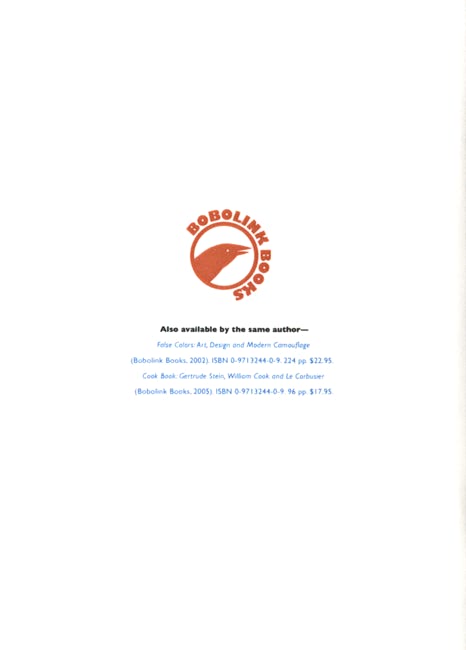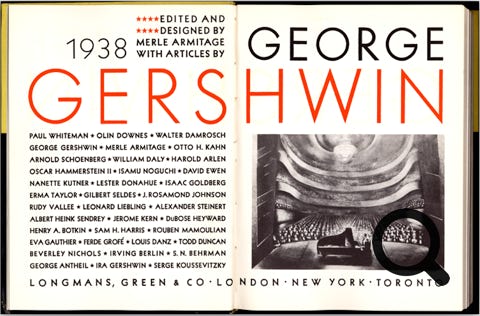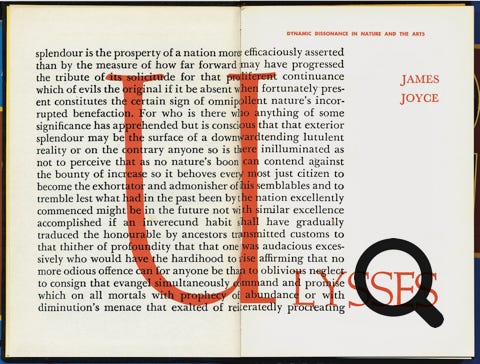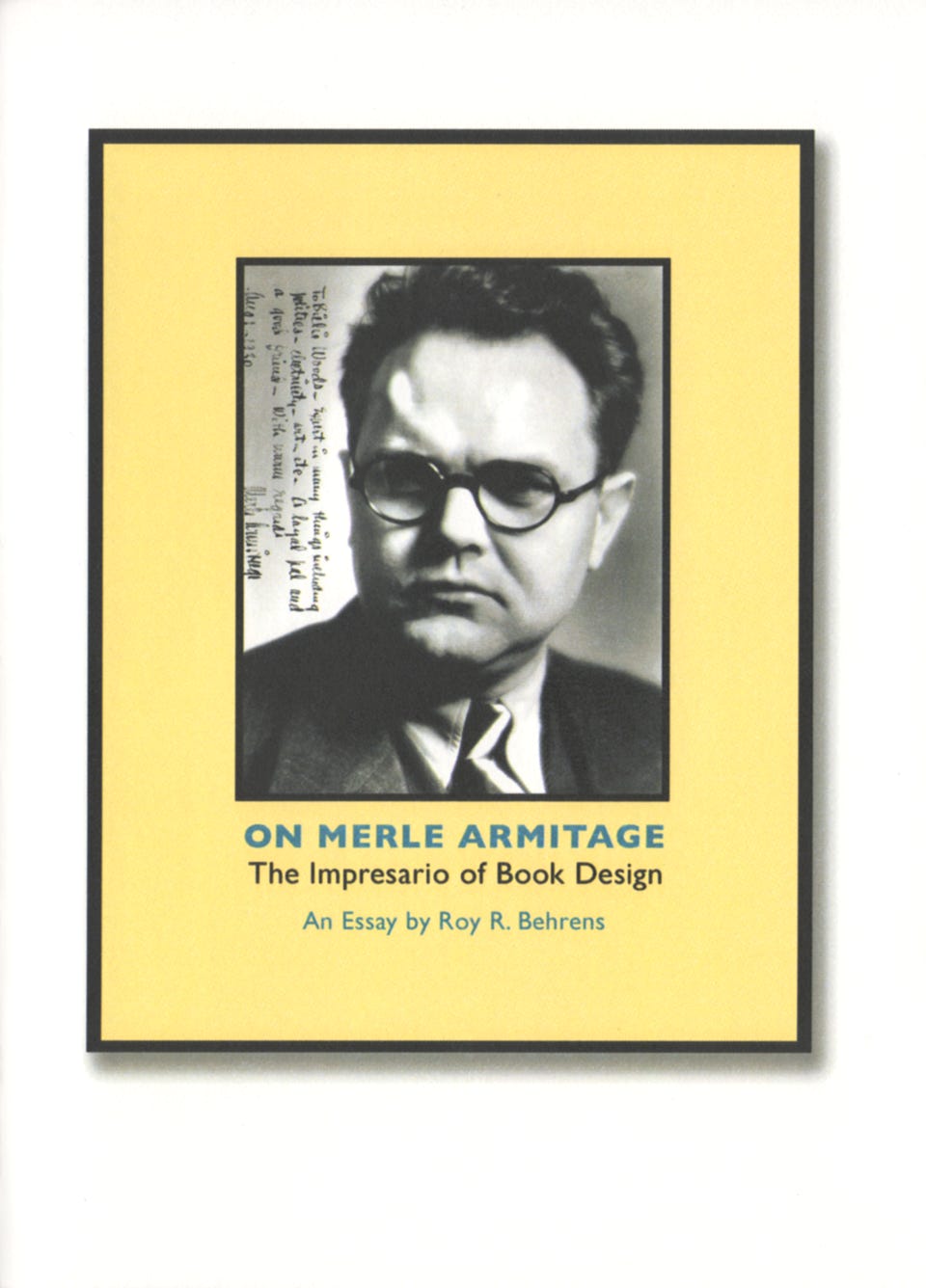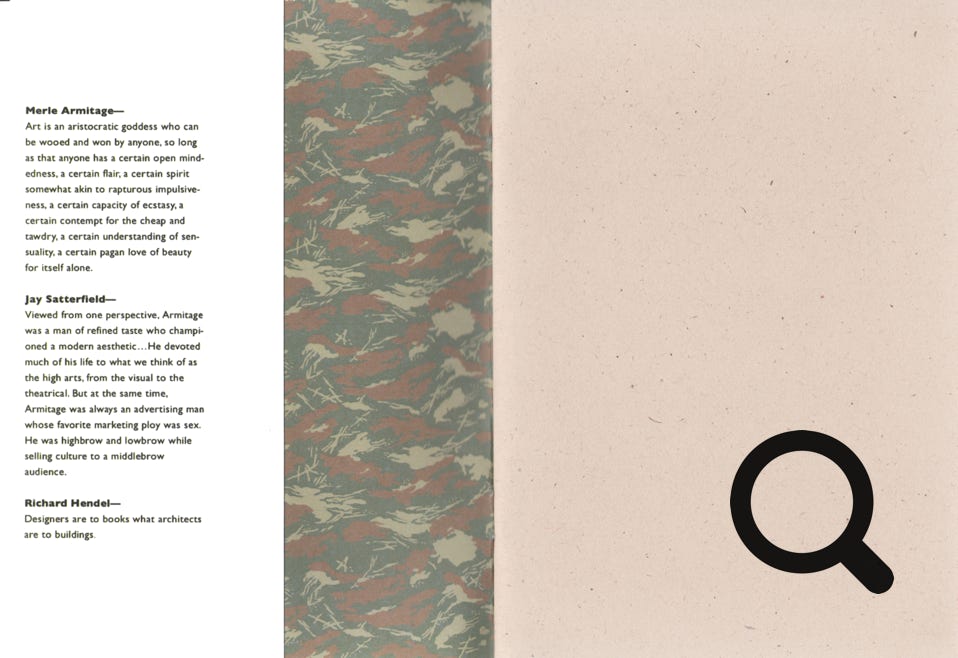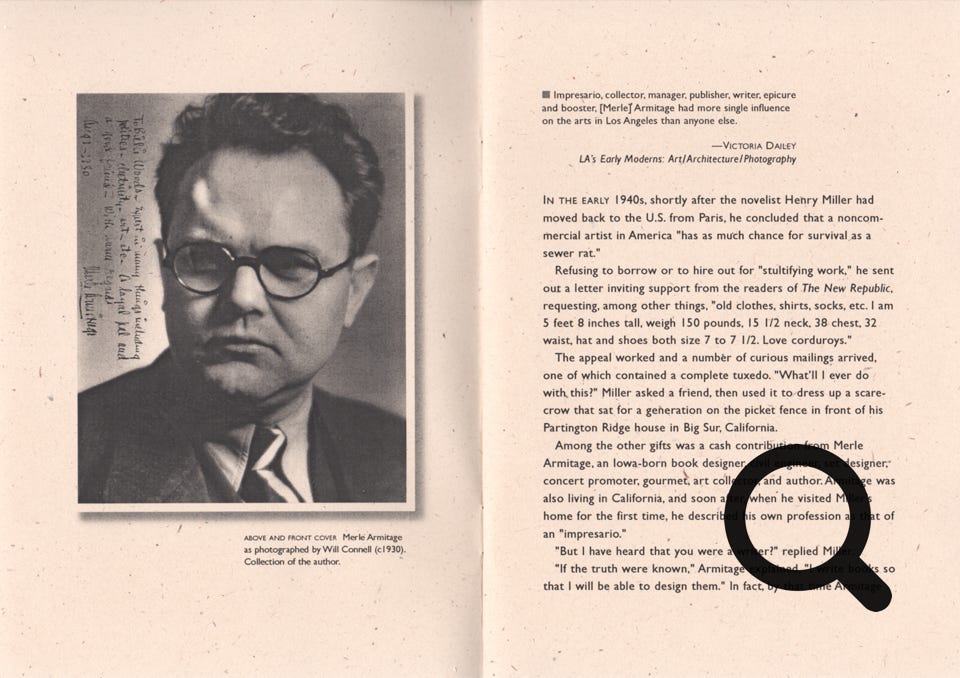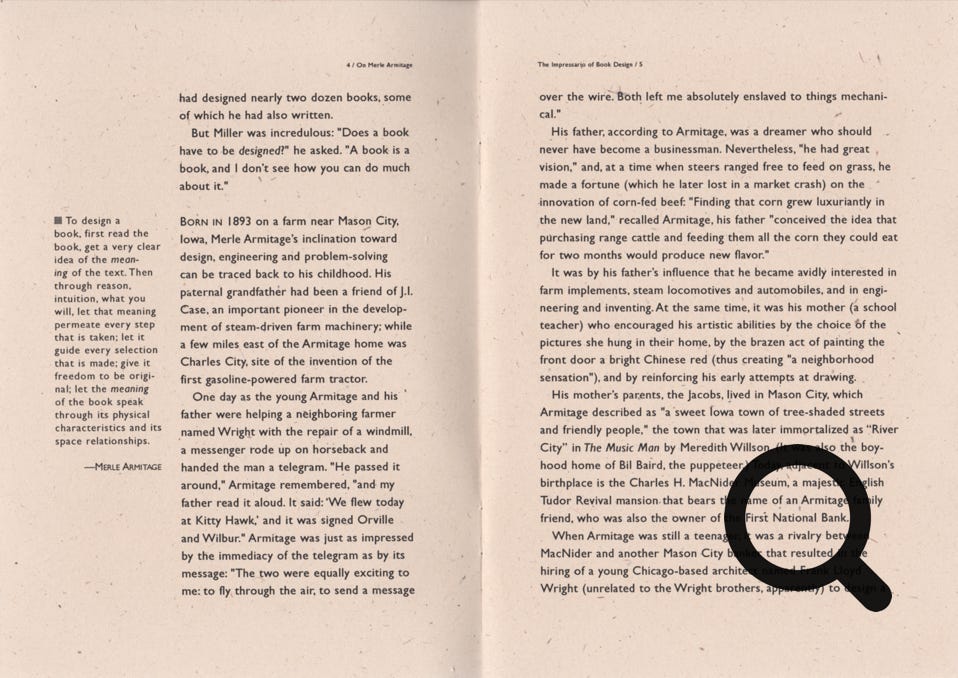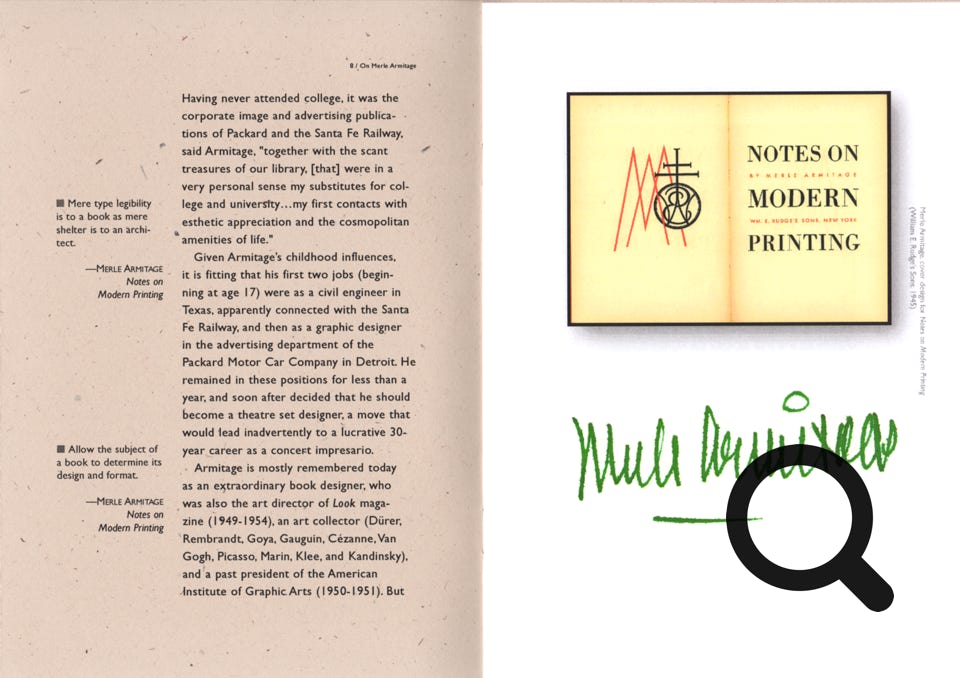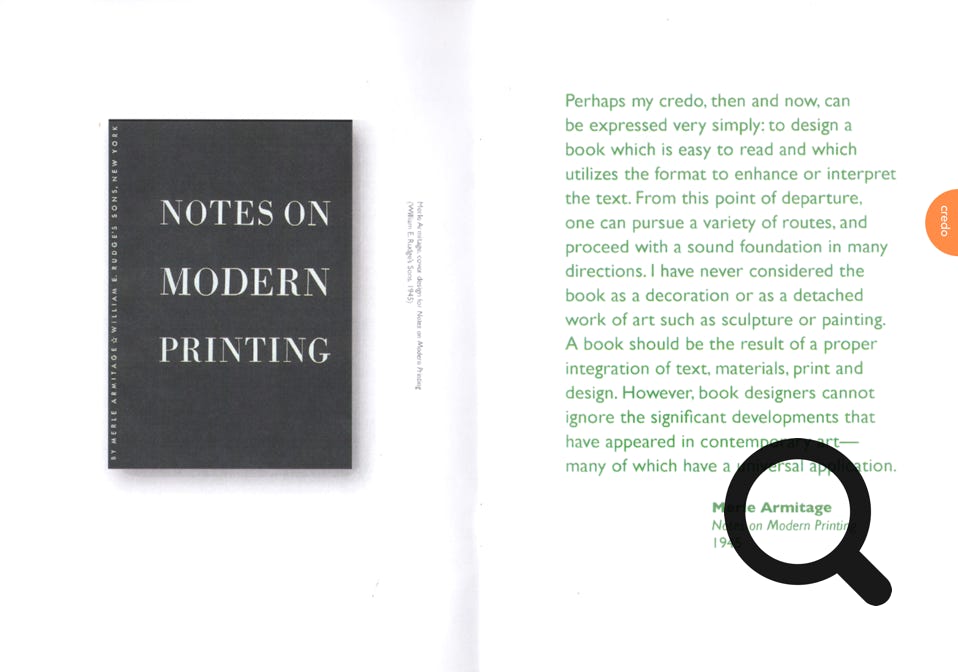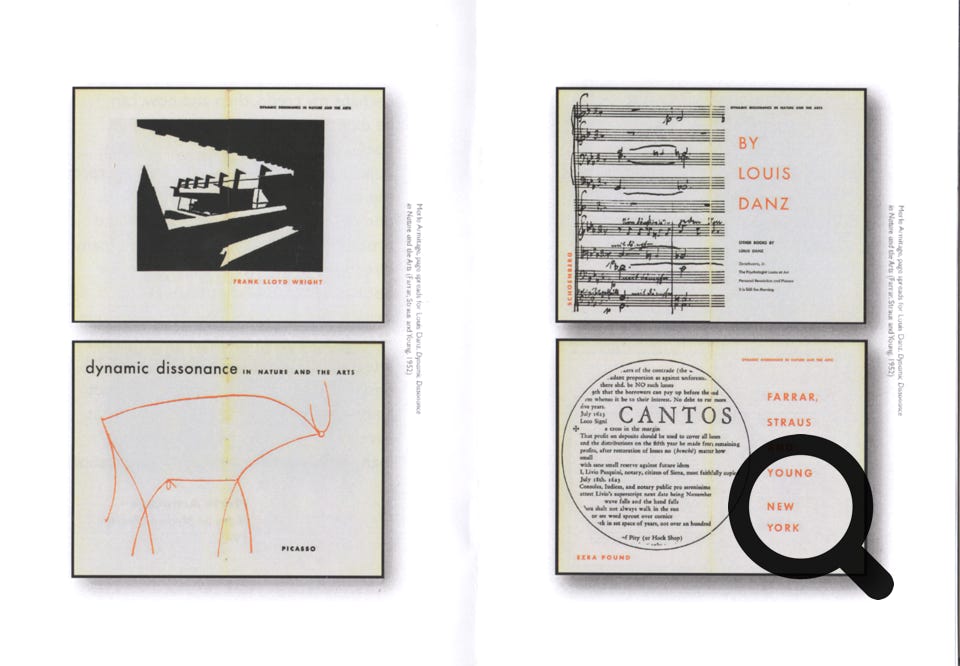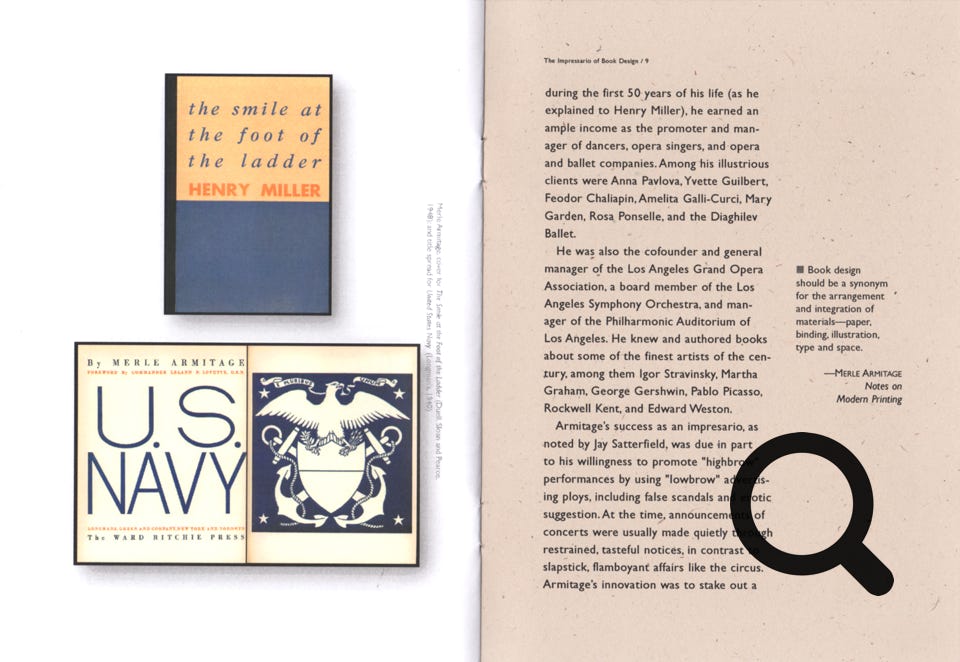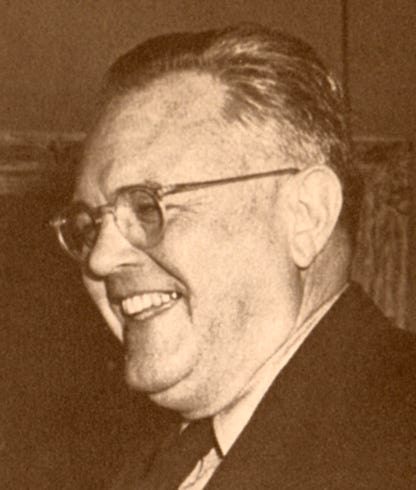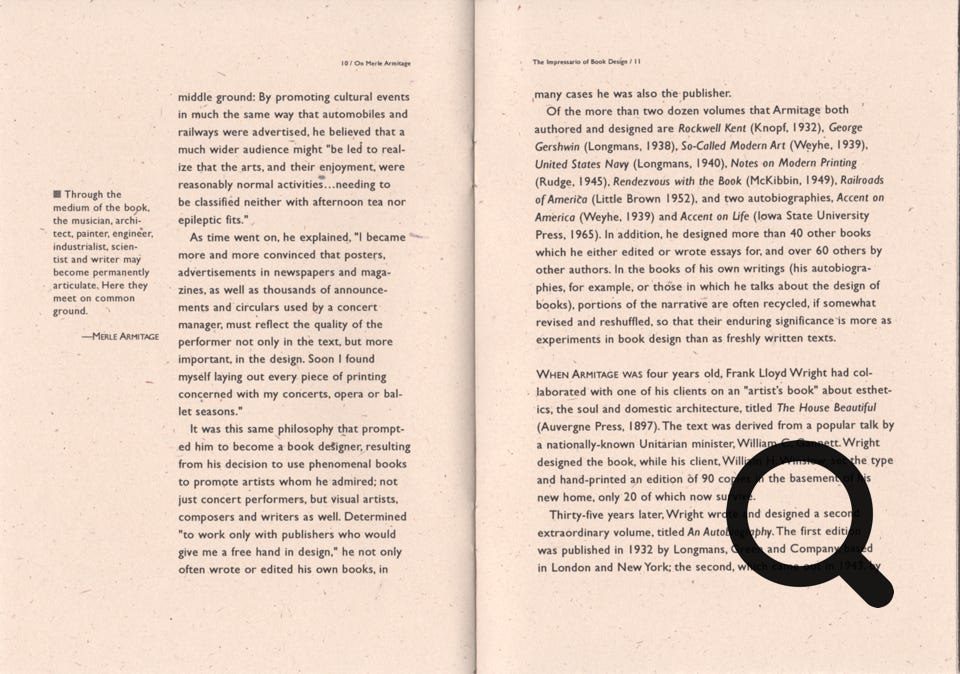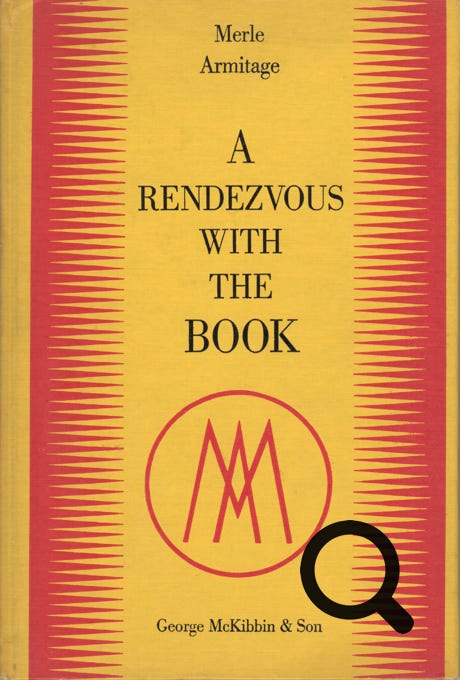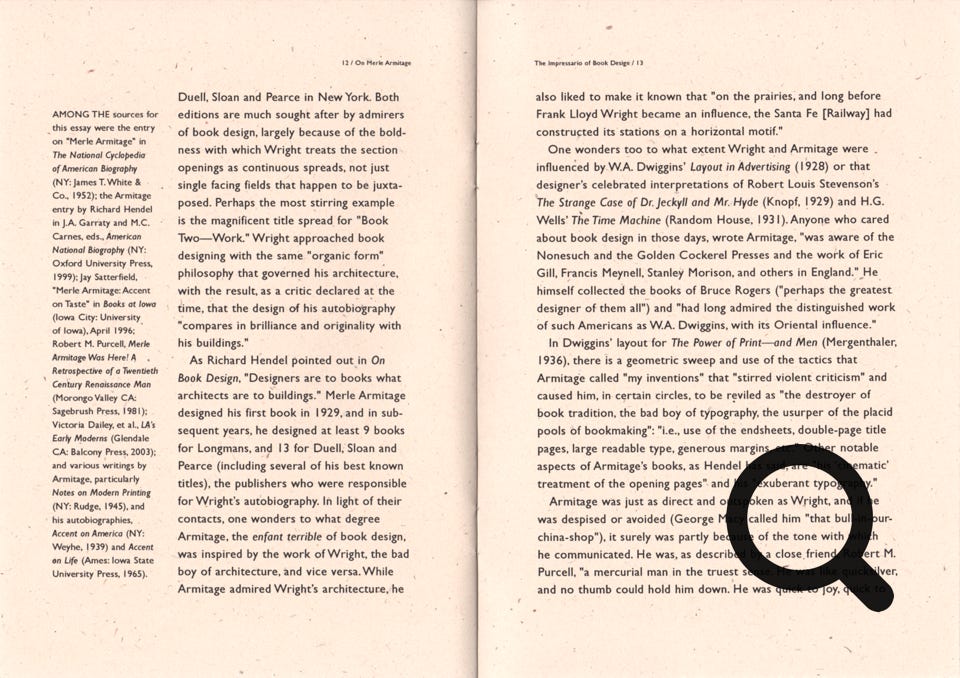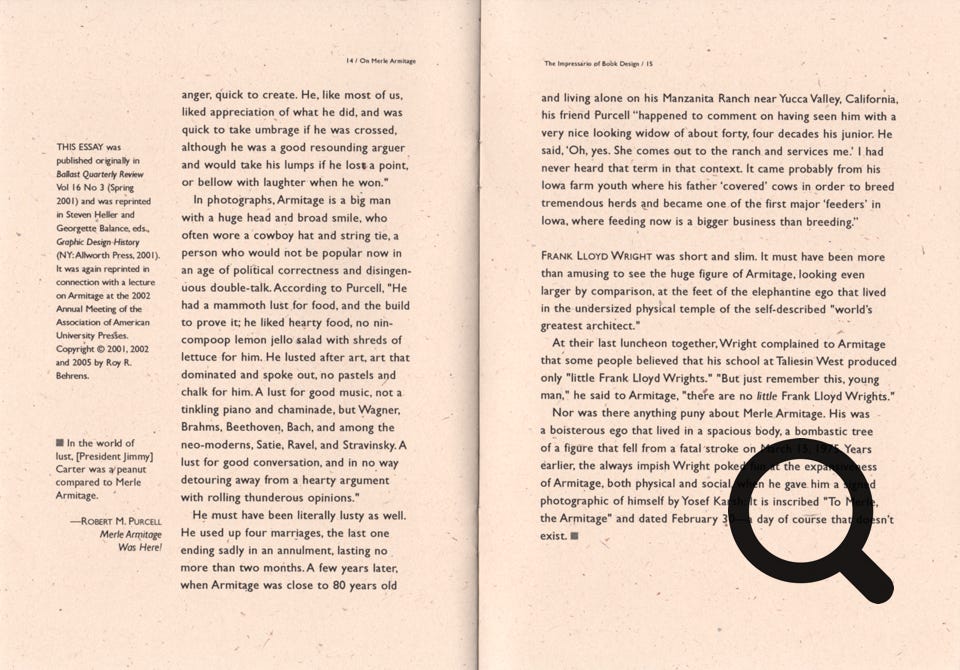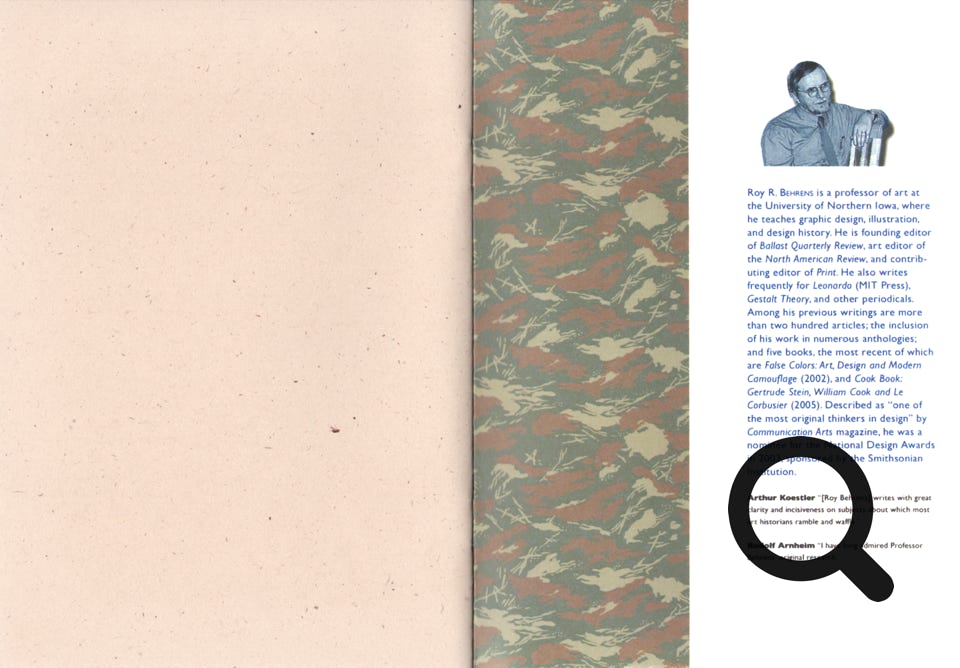The sources for this essay include the entry on “Merle Armitage” in The National Cyclopedia of American Biography (New York: James T. White & Co., 1952); the Armitage entry by Richard Hendel in J.A. Garraty and M.C. Carnes, eds., American National Biography (New York: Oxford University Press, 1999); Jay Satterfield, “Merle Armitage: Accent on Taste” in Books at Iowa (Iowa City: University of Iowa), April 1996; Robert M. Purcell, Merle Armitage Was Here! A Retrospective of a Twentieth Century Renaissance Man (Morongo Valley CA: Sagebrush Press, 1981); and various writings by Armitage, including Notes on Modern Printing (New York: Ridge, 1945); and his autobiographies, Accent on America (New York: Weyhe, 1939) and Accent on Life (Ames: Iowa State University Press, 1965).
It is time Americans realized the quality of the contributions Merle Armitage has made to our century. He has accomplished great things, always with style and originality.
—Frank Lloyd Wright
To design a book, first read the book, get a very clear idea of the meaning of the text. Then through reason, intuition, what you will, let that meaning permeate every step that is taken; let it guide every selection that is made; give it freedom to be original; let the meaning of the book speak through its physical characteristics and its space relationships.
—Merle Armitage
This essay was published originally in Ballast Quarterly Review, Vol 16 No 3 (Spring 2001), then reprinted in Steven Heller and Georgette Balance, eds., Graphic Design History (New York: Allworth Press, 2001). It was the basis of a presentation by the author at the 2002 Annual Meeting of the Association of American University Presses. Copyright © 2001, 2002 and 2019 by Roy R. Behrens.
Viewed from one perspective, Armitage was a man of refined taste who championed a modern aesthetic…He devoted much of his life to what we think of as the high arts, from the visual to the theatrical. But the the same time, Armitage was always an advertising man whose favorite marketing ploy was sex. He was high-brow and lowbrow while selling “culture” to a middle-brow audience.
—Jay Satterfield
